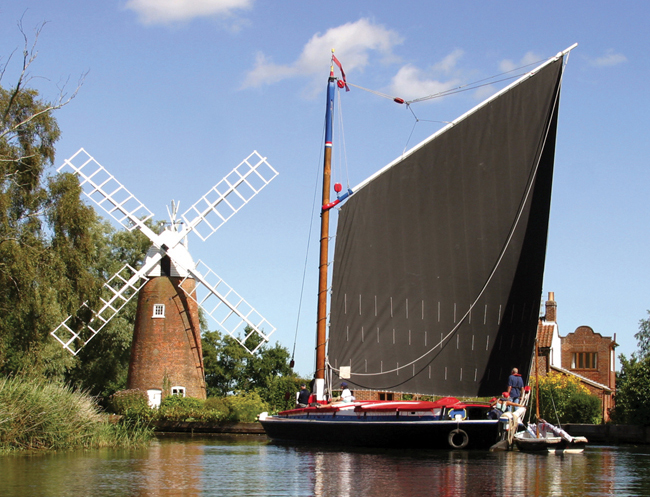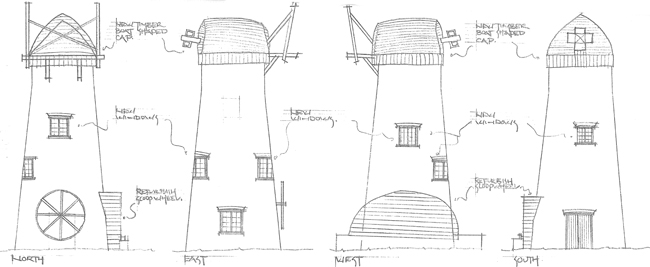Protected buildings
An essential part of our work is supporting the protection and enhancement of the Broads' rich and varied architectural heritage.
Historic buildings are important heritage assets and require specialist technical advice when considering repairs or alterations.
Listed buildings

Hunsett Mill (a grade II listed building) and the Wherry Albion
There are more than 270 listed buildings in the Broads including a number of important wind mills and pumps.
A listed building is one that has a special architectural or historic interest. The list is held by the Department for Culture, Media and Sport and administered by Historic England.
There are three classifications - grade I, grade II* and grade II. Controls on alterations apply equally to all grades and every part of a building is listed including the interior and any later alterations or additions.
Building Preservation Notices can be made on buildings that are not currently listed but which we consider to be worthy of listing. The notice lasts six months while English Heritage decides whether to list. During this time the buildings are deemed to be listed.
Benefits of listing
Additional controls over repairs or alterations allow us to protect the area's important heritage. You will need our consent to demolish a listed building or for any work which would affect its architectural or historic interest. This is in addition to any other consents required such as planning permission or building regulation approval.
The listed building consent process is very similar to the planning process. You will need to fill in listed building consent application forms and supply plans and details but please get our advice first as this is not always a straightforward issue.
Broads Local List
There are many more buildings or structures in the Broads which may not meet the national criteria for listing but contribute to the local character through their appearance or historical associations. These are included in the Local List of Heritage Assets. Although they are not statutorily protected, the Local List is linked to policies in the Local Development Plan.
Inclusion on a local list does not change the existing planning controls that already apply to the building but there are several reasons why such a list is important:
- To raise awareness of the area's special heritage and its importance to local distinctiveness
- To inform owners, the local community, developers, council officers and members about buildings which make a special contribution to the Broads landscape
- To help us when making decisions about development proposals and their effect on the character of the area
- To provide specialist advice to owners to help protect the character and setting of buildings.
Local List selection
The kind of structure that can be included is wide and varied including built parks and gardens, agricultural buildings, boat yards, drainage pumps, houses, bridges, locks, community buildings and monuments. Structures are assessed on the following criteria:
- Survival and authenticity
- Architectural/artistic interest
- Landscape/townscape significance
- Historic interest/social value/archaeological interest
See the Criteria and scoring for assessment (DOC) here.
To see the full list go to our Local List of Heritage Assets page.
Historic Buildings at Risk
A Buildings at Risk Register, published by English Heritage, brings together information on all listed buildings and scheduled monuments known to be vulnerable through neglect and decay. Planning authorities have powers to serve a repairs or urgent works notice and can carry this out then reclaim the costs from the owner.


